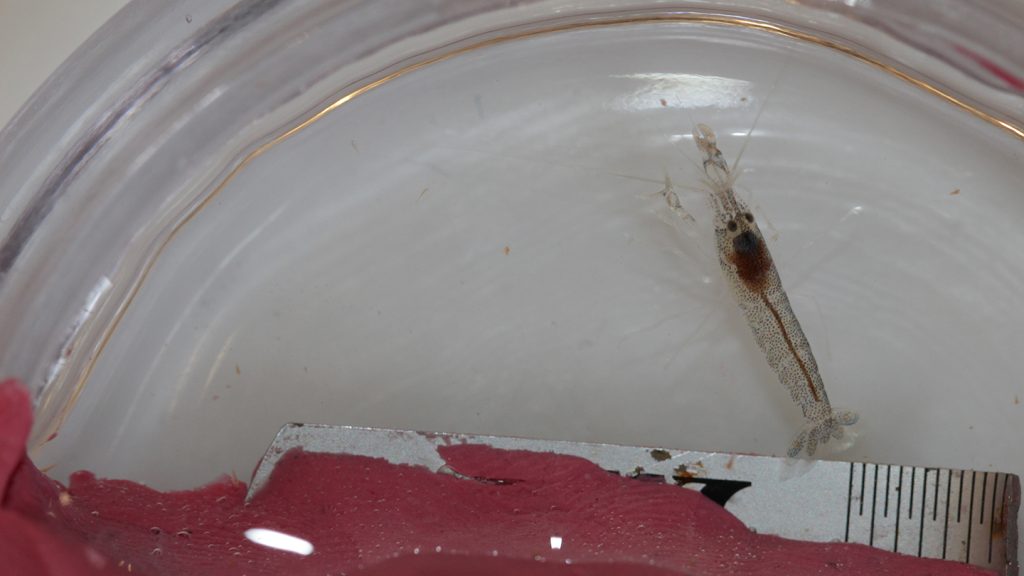The fastest claw in the sea belongs to young snapping shrimp

Full-grown snapping shrimp were already known to have some of the fastest claws under the waves. But it turns out they’re nothing compared with their kids.
Juvenile snapping shrimp produce the highest known underwater accelerations of any reusable body part, researchers report February 28 in the Journal of Experimental Biology. While the claws’ top speed isn’t terribly impressive, they go from zero to full throttle in record time.
To deter predators or competitors, snapping shrimp create shock waves with their powerful claws. The shrimp store energy in the flexing exoskeleton of their claw as it opens, latching it in place much like a bow-and-arrow mechanism, says Jacob Harrison, a biologist at Georgia Tech in Atlanta.
Firing the claw and releasing this elastic energy produces a speeding jet of water. Bubbles form behind it and promptly implode, liberating a huge amount of energy, momentarily flashing as hot as the sun and creating a deafening crack (SN: 10/3/01).
But it was unclear how early in their lives the shrimp could use this weaponry. “We knew that the snapping shrimp did this really impressive behavior,” Harrison says. “But we really didn’t know anything about how this mechanism developed.”
While a grad student at Duke University, Harrison and his adviser, biomechanist Sheila Patek, reared bigclaw snapping shrimp (Alpheus heterochaelis) from eggs in the laboratory. At 1 month old, the tiny shrimp — less than a centimeter long — began firing their claws when disturbed. The researchers took high-speed video footage of these snaps and calculated their speed.
The wee shrimp could create the collapsing bubbles just like adults. Despite being a tenth the adults’ size or smaller, the juveniles’ claws accelerated 20 times as fast when firing. This acceleration — about 600 kilometers per second per second — is on “the same order of magnitude as a 9-millimeter bullet leaving a gun,” Harrison says.
Dracula ants (Mystrium camillae) and some termites produce more explosive bites but aren’t pushing against water. The stinging cells of jellyfish launch their venomous harpoons about 100 times as fast, but their firing mechanism is inherently single use. Snapping shrimp, on the other hand, can fire their claws again and again.
The juveniles’ firing and bubble creation weren’t very reliable at the smallest sizes, but the shrimp routinely tried snapping anyway. The team wonders if the young shrimp could be practicing and training the necessary musculature.
If so, that training might ultimately be crucial to the claw’s function, says Kate Feller, a visual ecologist at Union College in Schenectady, N.Y., who studies similarly ultrafast mantis shrimp and was not involved in the new study. “If you were to somehow manipulate the claws so that they couldn’t properly close and they couldn’t snap,” she wonders, “would that affect their ability to develop these mechanisms?”
Understanding the storage of elastic energy in biological materials and how it flows through them is “tricky,” Harrison says. Figuring out how such tiny claws store so much energy without fracturing may help researchers illuminate this superpower.